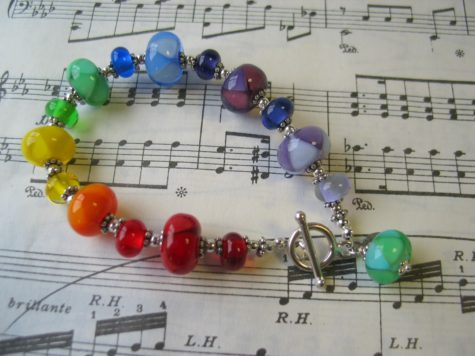Music and the Chakras
Music resonates the body’s energy system – the Seven Chakras. It stimulates these centers, awakening them and releasing the storehouse of creative vital force that is waiting there to be discovered, giving listeners glimpses into the deepest aspects of themselves.
There is a system for attributing specific notes to chakra energy centers. Personally, I feel that this system is arbitrary — the western temperament scale is a relatively recent development compared to the understanding of the chakra energy centers, which were first documented in the Upanishads sometime between 1200–900 BCE. Despite that arbitrariness, the system does seem to have value.
Our bodies are an electric concert of pulsating vibrational frequencies and dynamic rhythmic patterns that move with our emotions and shift with a thought. It seems natural that our organs and chakras uniquely respond to musical pitches. (I can not think of a better example than those non-invasive “sound surgeries” where kidney stones are shattered with pinpointed, high intensity sound waves.)
Aligning notes to chakras interests me; it is perfectly in accord with the principles of a vibrational universe. As Einstein says, “Everything in life is vibration.”
What follows is the list of chakras and their respective notes:
Muladhara: The “Base” or “Root” Chakra, Corresponds to the note “C”, and also the key of C. It is associated with the gonads and the adrenal medulla. Muladhara’s inner aspect governs sexuality, lust and obsession. Read More
Svadisthana: The Sacral Chakra, Corresponds to the note “D”, and also the key of D. It is associated with the testes or the ovaries that produce sex hormones. Svadisthana’s inner aspect relates to creativity and reproduction. Read More.
Manipura: The Solar Plexus Chakra, Corresponds to the note “E”, and also the key of E. It is associated with the Islets of Langerhans, which are groups of cells in the pancreas, as well as the outer adrenal glands and the adrenal cortex. Manipura’s inner aspect relates to personal power, fear and anxiety. Read More.
Anahata: The Heart Chakra, Corresponds to the note “F”, and also the key of F. It is associated with the thymus, a key element of the immune system. Anahata’s inner aspect relates to unconditional love for the self and others. Read More.
Vishuddha: The Throat Chakra, Corresponds to the note “G”, and also the key of G. It is associated with the thyroid, a gland that is produces thyroid hormone, responsible for growth and maturation. Vishuddha’s inner aspect relates to self-expression and communication. Read More.
Ajna: The “Third Eye” Chakra, Corresponds to the note “A”, and also the key of A. It is associated with the pineal gland that secretes the hormone melatonin, regulating sleep and awakening. Ajna’s inner aspect relates to the access of intuition. Read More.
Sahasrara: The Crown Chakra, Corresponds to the note “B”, and also the key of B. It is associated with the pituitary gland, the thalamus and the hypothalamus. Sahasrara’s inner aspect deals with meditation, and unity with universal consciousness. Read More.
Source: Higher Music



Leave a Reply